Africa has been long renowned in the mining industry as the continent with many of the largest and richest mineral deposits on Earth. Despite listing commodity prices and some political difficulties, Africa continues to attract Canadian junior companies, especially to the goldfields of West Africa. Here is a quick look at eight such companies.
AFRICAN GOLD GROUP
Toronto-based junior African Gold Group (TSXV: AGG; US-OTC: AGGFF), which is part of Stan Bharti’s Forbes & Manhattan group of companies, has as its flagship the advanced Kobada gold project in southwestern Mali.
Kobada has a total measured and indicated resource of 35.4 million tonnes grading 1.1 grams gold per tonne for 1.2 million contained oz. gold, plus another 32.8 million tonnes at 1 gram gold per tonne for 1 million oz. gold. The resource estimate is based on 1,095 holes totalling 126,000 metres.
AGG says the Kobada resource stretches over 4 km of strike, and the mineralized structure has been mapped over 12 km of strike.
The company has delineated four types of gold mineralization at Kobada: lateritic material, overlaying the main deposit; oxide mineralization consisting of ultra-weathered saprolite containing quartz veins; and transitional and fresh mineralization, consisting of partly and unweathered sedimentary rocks and quartz veins.
AGG says the Kobada deposit is “unusual for the depth of weathering,” with the base of oxidation occurring up to 120 metres below surface.
Previous management completed a feasibility study in 2016 that envisaged production rates of 50,000 oz. gold per year, but the newer team is targeting a mine at Kobada that could exceed 100,000 oz. gold per year.
In April, AGG consolidated its common shares on a 1 for 7.5 basis, leaving it with 48.2 million shares outstanding. With shares last trading at 20¢, this equates to a $9.7-million market capitalization.
ASANKO GOLD

The processing plant at Asanko Gold’s Nkran gold mine in Ghana. Credit: Asanko Gold.
Asanko Gold’s (TSX: AKG; NYSE-AM: AKG) flagship asset is its 45%-owned Asanko gold mine in Ghana, which it co-owns with South African gold miner Gold Fields (NYSE: GFI), with 45% ownership; and the Ghanaian government, with 10%.
The Asanko mine is a large, multi-pit asset that is managed and operated by Asanko Gold. Located on the Asankrangwa gold belt, the assets comprise nine deposits and 11 pits.
It was built in 2015 ahead of schedule and within budget, with first gold was poured in January 2016, and commercial production attained in April 2016.
In 2018, the mine had record production of 223,152 oz. gold on a 100% basis.
This year, Asanko Gold says the mine is targeting production of 225,000 to 245,000 oz. gold at all-in-sustaining costs of US$1,040 to US$1,060 per once, and is on track to reach that figure with 60,425 oz. gold produced in the first quarter of 2019, on a 100% basis.
In a May 8 release, Asanko CEO Greg McCunn said that “after a thorough review of our current operations in my first month as CEO, I can see that we are in the final stages of a two-year capital investment program, which included a mill expansion from 3 million to 5 million tonnes per year, a major pushback of the Nkran pit and the initial development of Esaase.
“We are now well positioned to start harvesting the benefits of these major investments as we shift our focus to maximizing cashflow generation from the AGM over the next 18 to 24 months, while we work with our JV partner on formulating the long-term development plan for Esaase and optimal life-of-mine plan for the AGM complex.”
AWALE RESOURCES
Vancouver-based junior Awalé Resources (TSXV: ARIC) describes itself as a gold exploration company focused on the discovery of large, high-grade deposits in the “underexplored” jurisdiction of Côte d’Ivoire, which Awale notes contains a third of the prospective Birimian greenstone belts in West Africa, but less than 10% of total gold resources, “making it an ideal location for new gold discoveries.”
Much of Awalé’s management team are derived from Mariana Resources, which was acquired by Sandstorm Gold in July 2018 for its Hot Maden high-grade gold-copper project in northeastern Turkey. Glen Parsons serves as Awalé’s president and CEO.
Awalé’s flagship project, named ‘Bondoukou,” is located in northeastern Côte d’Ivoire at the southern extents and confluence of the Boromo greenstone belt from Burkina Faso, and the Bolgatanga and Wa Lawra belts from Ghana.
Bondoukou is accessible via sealed roads from Abidjan to the city of Bondoukou, and consists of three granted permits covering 1,192 sq. km, along with three applications covering 1,183 square kilometres.
In early June, Awale reported that a planned 10-trench program for the Fako prospect at Bondoukou had already returned a 21-metre intercept at 1.96 grams gold per tonne, including 1 metre intervals of 11.5 grams gold, 5.5 grams gold and 5.4 grams gold.
CALEDONIA MINING
Domiciled in Jersey, Caledonia Mining (TSX: CAL; NYSE-AM: CMCL) has as its primary asset the Blanket gold mine in Zimbabwe, which it bought from Kinross Gold in 2006.
Following what the junior calls the “implementation of indigenization,” with effect from September 2012, Caledonia owns a 49% interest in Blanket.
For the first quarter of 2019, Blanket produced 11,948 oz. gold on a 100% basis, and Caledonia says it is keeping full-year production guidance for 2019 of 53,000 to 56,000 oz. gold on a 100% basis, and that it is on track with progress towards its target of 80,000 oz. gold on a 100% basis by 2022.
Caledonia CEO Steve Curtis said in an April release that “continued difficulties with unstable electricity supply and grade dilution, which we experienced in 2018, had an adverse effect on production, but improved drilling and blasting practices have been put in place in pursuit of improved grade control, and I am pleased to say that efforts to minimize dilution are proving successful.
“Our technical team has worked tirelessly to mitigate the effects of electricity supply interruptions, and we continue to work closely with the Zimbabwean electricity supply authorities to address these challenges, as well as investing internally to improve our resilience to this issue.”
Caledonia said in April that the central shaft sinking continues according to plan, and that the firm is nearly finished, and set to start shaft equipping from mid-2019.
Said Curtis: “We look forward to commencing production from the central shaft from mid-2020, which is expected to deliver the company’s growth plan to achieve 75,000 oz. in 2021, and 80,000 oz. by 2022.”
DESERT LION ENERGY
Toronto-based, Tim Johnston-led Desert Lion Energy (TSXV: DLI; US-OTC: DSLEF) intends to develop the first large-scale lithium mine in Namibia, located near Karibib in the Erongo region, within 301 sq. km of prospective land, with known lithium-bearing, pegmatitic mineralization.
Desert Lion says its brownfield lithium asset was found and developed in the 1930s, and the property has a history of small-scale mining operations, including the historic Rubicon and Helikon lithium mines.
The company notes the project site is accessible year-round by road, with access to power, water, rail, port, airport and communication infrastructure.
Desert Lion had been in the first phase of its production plan: producing and exporting lithium concentrate from stockpiled material.
The company determined it would cost $7 million to build a flotation plant that processes between 350,000 tonnes and 400,000 tonnes of feed per year, assuming it could prove up a resource in an initial range of 10 million to 15 million tonnes grading 1.5% Li2O.
However, in May 2019, Desert Lion entered into an agreement to merge with Joe Walsh-led, Australian junior Lepidico (ASX: LPD), with Lepidico to acquire all of the outstanding shares of Desert Lion for 5.4 Lepidico shares for every 1 Desert Lion share. The deal is expected to close in July 2019.
Desert Lion says Lepidico “owns the technology to a metallurgical process that has successfully produced lithium carbonate from non-conventional sources, specifically lithium-rich mica minerals, including lepidolite and zinnwaldite. The L-Max process can complement the lithium market by adding low-cost lithium carbonate supply from alternative sources. More recently, Lepidico added LOH-Max to its technology base, which produces lithium hydroxide from lithium sulphate without by-product sodium sulphate.”
PLATINUM GROUP METALS

A drill site at Platinum Group Metals’ Waterberg PGM project in South Africa. Credit: Platinum Group Metals.
Based in Vancouver and Johannesburg, R. Michael Jones-led junior Platinum Group Metals (TSX: PTM; NYSE-AM: PLG) is the operator of the Waterberg platinum group metals project — a bulk-underground deposit in northern South Africa that was discovered by Platinum Group Metals.
The company says the asset “has the potential to be a low-cost producer of palladium, platinum, rhodium and gold,” and it is focused on completing a definitive feasibility study for the large-scale, palladium-dominant mine that may use tailings as backfill.
Impala Platinum (Implats) made a strategic investment of $30 million in November 2017 to buy a 15% stake in Waterberg, from which the junior received $17.2 million for its 8.6% project interest sold.
Implats may elect to increase its stake to 50.01% by more share purchases from Japan Oil, Gas and Metals National Corp. (JOGMEC) for $34.8 million, and a commitment to spend $130 million to develop Waterberg. Implats will also have a right of first refusal to smelt and refine Waterberg concentrate.
In March 2019, Platinum Group Metals reported the transfer of a 9.76% interest in Waterberg JV Co. to Hanwa Co. Ltd. by JOGMEC. Before the transfer, JOGMEC held a 21.95% interest in Waterberg.
A technical committee of Waterberg JV Resources Pty Ltd. is overseeing the feasibility study, with participation from all partners. A mining application has been filed and community consultation is ongoing. Power and water planning for the project is advancing, including work under a regional water co-operation agreement with the Capricorn Municipality, and engineering and permitting work with power utility Eskom.
In all categories and on a 100% basis, Waterburg has a resource totalling 26.34 million oz. platinum, palladium, rhodium and gold (together known as “4E”) in 242.5 million tonnes at 3.38 grams 4E per tonne, comprised of 63.04% palladium, 29.16% platinum, 6.37% gold and 1.43% rhodium.
TANZANIA MINERALS
Tanzania Minerals (TSXV: TZM.H) is emblematic of the difficulties and opportunities faced by the micro-cap mineral explorers in 2019.
For years based in Winnipeg, the Rob Dzisiak-led junior had two gold exploration projects in northern Tanzania: Katario (Mrangi East) in Musuma district; and Mrangi, located 50 km southwest of Musoma.
However, the company was suspended from the TSX Venture Exchange in September 2016 for failure to file its financial statement on time.
In April 2018, shares were consolidated on a 1-for-30 basis, and the company closed out September 2018 with $98,000 in working capital — finally transformed from a gold explorer to a shell company.
Fast-forward to June 2019, and Boca Raton, Florida-based Jushi Holdings, a multi-state cannabis and hemp operator, has just completed a reverse takeover of Tanzania Minerals Corp., at the same time it closed its acquisition of intellectual property from “the Clinic Consulting Services, the Bank and the Lab, and its award-winning operations team,” for a combination of US$4.1 million in cash and US$5.9 million in shares, which brings in “the Clinic’s expertise as an integrated operator and cannabis industry pioneer.”
TERANGA GOLD

Teranga Gold’s Sabodala gold mine in Senegal. Credit: Teranga Gold.
Toronto-based junior Teranga Gold (TSX: TGZ; US-OTC: TGCDF) has production- and development-stage gold assets in several West African countries, as well as exploration assets covering 6,400 sq. km in Burkina Faso, Senegal and Côte d’Ivoire.
In its first-quarter results release in May, Teranga had several highlights, including: record quarterly gold production of 71,946 oz., a 12% increase; per-ounce cost metrics decreasing by up to 9%, and below full-year guidance ranges; staying on track to meet full-year production and cost guidance; operating cash flow before changes in working capital excluding inventories rose 6% to US$26.3 million, and operating cash flow increased 261% to US$49.6 million; and net income attributable to shareholders decreased to a loss of US$2.7 million.
Meanwhile, construction of its Wahgnion project is on budget and on track for commissioning in the third quarter, and the company issued an initial resources estimate for Golden Hill, its most advanced exploration project.
Teranga president and CEO Richard Young said that 2019 is “off to a strong start for Teranga across our portfolio, with record operational results from Sabodala, good construction progress at Wahgnion and an initial resource at Golden Hill. Our 10-year-old cornerstone asset, Sabodala, set a record for quarterly production in the first quarter. With over 12 years of mine life remaining, Sabodala is delivering solid free cash flow to support our growth initiatives.”

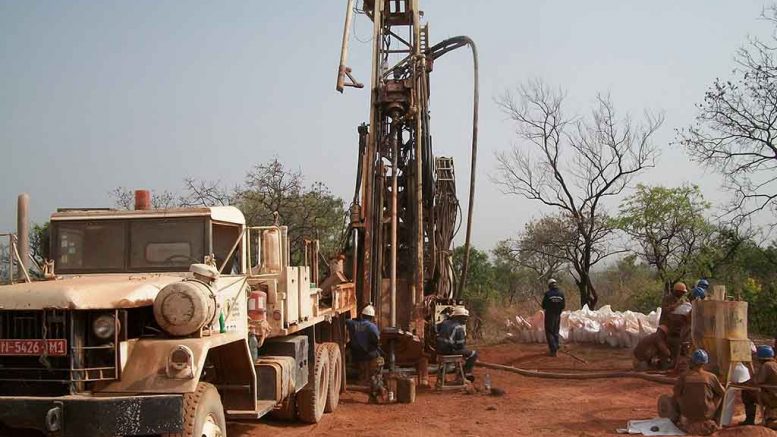
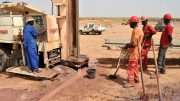
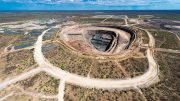
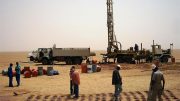
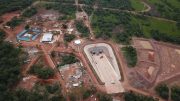
Be the first to comment on "Snapshot: Eight explorers and miners with ties to Africa"